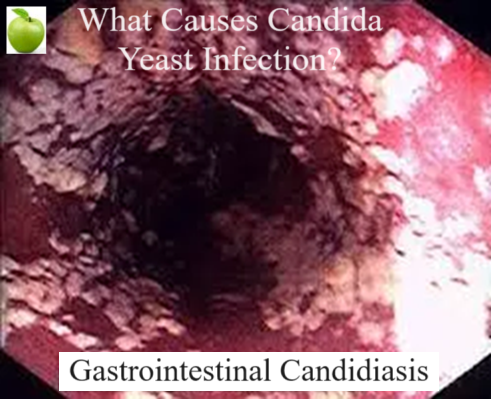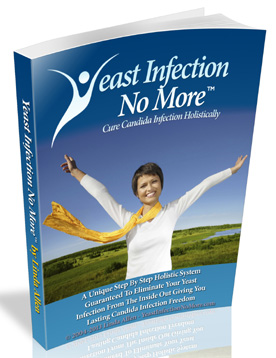We include products we think are useful for our readers. However, when you buy something through our retail links, we may earn an affiliate commission.
Candida Yeast Infection
Candida Albicans The Most Common Species Worldwide
Candida Yeast Infection is an overgrowth of yeast. As of 2023 Candida Albicans is the most commonly encountered species worldwide except India.
India's most common species is Candida Tropicalis and has the highest rate of mortality. In this article we will discuss Candida Albican since it is the most prevalant worldwide.
Candida Albicans is a yeast which is a type of fungus that typically
lives in small amounts on our skin, mouth, nose and in our intestines. When it gets out of control in the gut, overgrown, it starts wreaking havoc deep in the body.
The affects and impacts of Candida overgrowth or candidiasis are far-reaching and
can lead to a host of health problems affecting
anyone regardless of age or gender. It is more
common in individuals with a weakened immune system, but it can also occur in
healthy individuals
and can be challenging to diagnose due to symptom overlap with
other conditions.
There is indeed a growing
concern about the rise in conditions linked to Candida overgrowth. Researchers are starting to uncover links between
Candida overgrowth and a variety of chronic diseases, highlighting the
potential far-reaching impacts on human health.
Candida yeast infections can lead to a variety of health issues beyond commonly known yeast infections. And, this leads to an overwhelming number, an epidemic, of infectious diseases and symptoms that are related to a Candida yeast infection.
Several Factors Can Contribute
To Candida Overgrowth
- Several factors can contribute to Candida overgrowth. Antibiotics are often a key contributor, as they can kill off the natural bacteria in your gut, allowing Candida to thrive. Steroids can suppress the immune system making it easier for this yeast to take over.
- Diet also plays a significant role in controlling Candida overgrowth. Diets high in sugar and refined carbohydrates provide an abundant food source for Candida yeast and can aid its proliferation in the gut.
- Processed foods, high-starch vegetables, and alcohol can also contribute to overgrowth. Many people who have Candida overgrowth find relief from symptoms by sticking to a low-sugar, low-carbohydrate diet that restricts foods which feed yeast cells.
- On the other hand, a diet rich in protein, healthy fats, and non-starchy vegetables, as well as certain foods with natural anti-fungal properties, like garlic and coconut oil, can help inhibit Candida growth. Probiotic foods can also be helpful as they work to reintroduce beneficial bacteria to the gut.
- Stress and lack of sleep can also contribute to Candida overgrowth by affecting the immune system's ability to keep yeast under control.
In today’s society with antibiotics, steroids and other medications that kill the good bacteria, and our drug contaminated water supply, consumption of steroid and antibiotic riddled meat and dairy products, this would mean most everyone’s immune system has been compromised to some degree.
For some people, this overgrowth can become chronic and can lead to multiple symptoms in various parts of the body, a condition often referred to as Candida overgrowth syndrome. Symptoms can vary from person to person and may include chronic fatigue, mood disorders, recurring vaginal or urinary tract infections, oral thrush, sinus infections, intestinal distress, brain fog, and strong cravings for sugar and carbohydrates.
Severe candida infections, known as invasive candidiasis,
can even lead to life-threatening complications. If Candida enters the
bloodstream by perforating the intestinal wall, it can cause a systemic infection, affecting vital organs and
causing flu-like symptoms. Individuals with compromised immune systems, such as
those with HIV or those undergoing chemotherapy, are at a higher risk for
systemic candidiasis.
When it gets deep in the body the infection can affect the blood, heart, brain, eyes, bones, and
other parts of the body and has a high mortality rate. Although primarily seen
in hospitalized or immune-compromised individuals, it can occur in otherwise
healthy individuals as well.
Understanding and addressing Candida overgrowth is critical to managing its impacts on public health. It's essential to raise more awareness about its potential consequences.
Is Candida Albicans Is An Opportunist?
Yes, Candida albicans is often
described as an "opportunistic" pathogen. This means that it usually
exists quietly and harmlessly as part of our body's natural microbiome
in places such as the skin, mouth, throat, gut, and vagina. It doesn't
usually cause problems and lives in balance with other microbes in the
body.
However, given the opportunity such as weakened immunity,
changes in the body's pH balance, or a diminishing of the competing
bacteria due to antibiotic use or poor diet, Candida albicans can
multiply rapidly and cause infection. It’s also why candidiasis is common in
newborns, that have not yet fully developed their immune systems, and in
the elderly, whose immune systems may be weakened by age or illness.
If you are having or experiencing symptoms and think or have been told they are due to another condition such as a disease or virus, it could very well be a Candida Yeast Infection.
How Steroids And Antibiotics Are Linked
To A Candida Yeast Infection
Both steroids and antibiotics have
been linked to Candida yeast infections. This has to do with how these
drugs can alter the body's natural balance of microorganisms.
- Antibiotics: Antibiotics are prescribed to kill bacteria that cause infections. However, they can also kill off the "good" bacteria in your body that keep Candida yeast in check. With these helpful bacteria reduced, Candida yeast can multiply unchecked and lead to an overgrowth or infection.
- Steroids: Corticosteroids, whether taken orally or inhaled, can suppress the immune system over time. A well-functioning immune system helps control the balance of bacteria and yeast in your body. When the immune defenses are weakened, it provides an easier environment for Candida yeast to overgrow.
Remember, Candida Albicans, yeast fungus, is an opportunist.
Mark Hyman, MD Discusses
Overuse Of Antibiotics
Candida Overgrowth And A Raw Diet
How does a raw diet encourage a yeast overgrowth infection?
- If you consume a raw diet, you are more susceptible to a yeast overgrowth infection than a person on a normal healthy diet that includes protein in their meal and stays away from processed and packaged food. A raw diet consists of natural carbohydrates from fruit, wheat, starch and many vegetables.
- The foods in a raw diet break down into sugar or contain sugars that are the natural food source for intestinal Candida Ablicans These sugars are Candida's food supply allowing the yeast to grow and begin wreaking havoc on your system.
- And, If you are among the many who consume too much carbohydrates, you are very susceptible to a Candida yeast infection.
If you are on a raw diet it is recommended you supplement your gut with probiotic and prebiotic.
How do antibiotics get into water, meat and dairy products?

About 80% of antibiotics produced in the U.S. are given to farm animals, our meat and dairy supply. Nearly two trillion tons of animal waste is produced every year and this waste is loaded with undigested antibiotics that seep in and contaminate our ground and surface waters.
People urinate up to 90% of some drugs and flush old prescriptions down the toilet. There are 126 different antibiotics and anti-infective drugs identified in our water supplies; processed waste water, natural surface water, groundwater, and our drinking water and, this may be helping to contribute to the Candida infection epidemic.
You see, how easy it is to ingest antibiotics, steroids and other medications with out intending to and this opens the door for a Candida yeast infection.
Are women more susceptible to Candida Yeast Infections?
- The answer is yes, women are more susceptible than men simply because they have used some form of birth control whether it is pills, patches or the copper IUD’s.
- Women also have a slower oxidation rate than men do. The metabolizing of carbohydrates, proteins and fats into energy is referred to as oxidation. This slower oxidation rate is associated with adrenal and thyroid weakness, copper toxicity, impaired immune response and general fatigue; leaving your immune system compromised and susceptible to vaginal yeast infections among other yeast related infections.
Men are not out of the woods though, when it comes to genital infections, they are susceptible to penis rashes and infections, jock itch, including oozing puss.
You can get your body back in balance and eliminate the multitude of seemingly unrelated symptoms that is linked to a Candida yeast infection. You can take this Candida overgrowth test at home it is simple and free. Then consider your next steps of action.
Eliminate Candida Yeast Infection and it's symptoms including excessive bloating and many illnesses that stem from yeast overgrowth through your diet and the #1 selling Candida Infection Cure e-book.
Advertisement
Read More
Recent Articles
-
Guide To Botanical Facial Oils And Harnessing Their Anti-Aging Powers.
Feb 07, 24 06:48 PM
A complete guide to botanical facial oils that takes the guesswork out of these magical elixirs, and the powerful benefits that plant oils have to offer your skin. -
Is Exfoliating Your Skin Important? The answer is yes! Especially if..
Dec 29, 23 11:29 PM
Exfoliating your skin is important to help determine how radiant, healthy and younger looking our skin will feel and look so, exfoliating it is an important step in our skincare routine.. -
Healthy Water, What Is The Best Healthiest Drinking Water?
Dec 29, 23 01:11 PM
Healthy water keeps our cells regenerated, replenished and plump giving them the energy to rebuild and function properly. You want to give your body the best possible water available, right?











